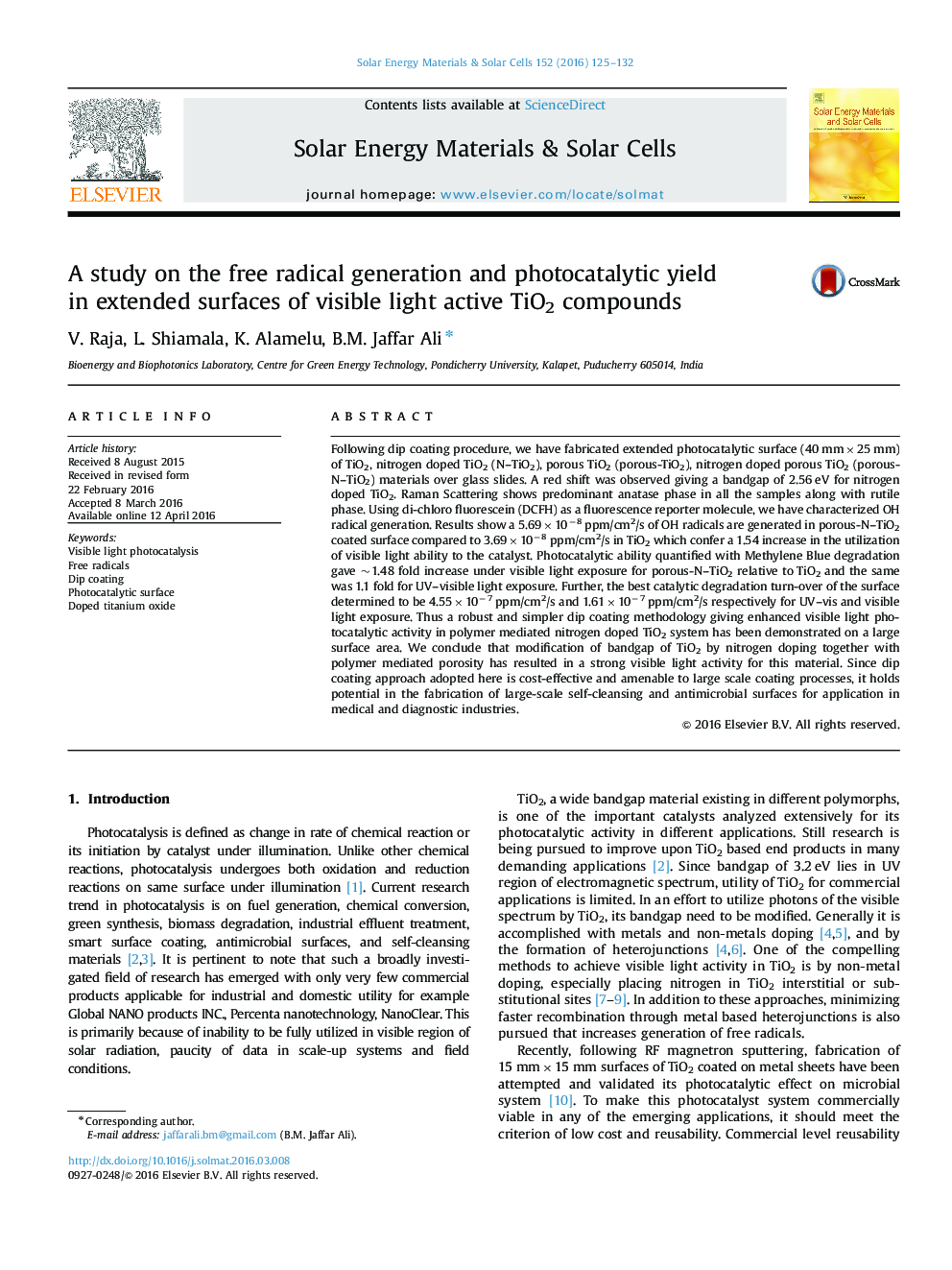| Article ID | Journal | Published Year | Pages | File Type |
|---|---|---|---|---|
| 77586 | Solar Energy Materials and Solar Cells | 2016 | 8 Pages |
•Large photocatalytic surface has been fabricated.•Photoactivity has been enhanced by band gap and surface modification.•Absorption edge has been red shifted significantly giving 1.5 fold increase in visible light photocatalysis relative to UV.•Correlated the free radical generation with the photocatalytic activity of various TiO2 surfaces.•A proof of concept on dip coating based cost effective methodologies for surface catalysis has been demonstrated.
Following dip coating procedure, we have fabricated extended photocatalytic surface (40 mm×25 mm) of TiO2, nitrogen doped TiO2 (N–TiO2), porous TiO2 (porous-TiO2), nitrogen doped porous TiO2 (porous-N–TiO2) materials over glass slides. A red shift was observed giving a bandgap of 2.56 eV for nitrogen doped TiO2. Raman Scattering shows predominant anatase phase in all the samples along with rutile phase. Using di-chloro fluorescein (DCFH) as a fluorescence reporter molecule, we have characterized OH radical generation. Results show a 5.69×10−8 ppm/cm2/s of OH radicals are generated in porous-N–TiO2 coated surface compared to 3.69×10−8 ppm/cm2/s in TiO2 which confer a 1.54 increase in the utilization of visible light ability to the catalyst. Photocatalytic ability quantified with Methylene Blue degradation gave ~1.48 fold increase under visible light exposure for porous-N–TiO2 relative to TiO2 and the same was 1.1 fold for UV–visible light exposure. Further, the best catalytic degradation turn-over of the surface determined to be 4.55×10−7 ppm/cm2/s and 1.61×10−7 ppm/cm2/s respectively for UV–vis and visible light exposure. Thus a robust and simpler dip coating methodology giving enhanced visible light photocatalytic activity in polymer mediated nitrogen doped TiO2 system has been demonstrated on a large surface area. We conclude that modification of bandgap of TiO2 by nitrogen doping together with polymer mediated porosity has resulted in a strong visible light activity for this material. Since dip coating approach adopted here is cost-effective and amenable to large scale coating processes, it holds potential in the fabrication of large-scale self-cleansing and antimicrobial surfaces for application in medical and diagnostic industries.
Graphical abstractFigure optionsDownload full-size imageDownload as PowerPoint slide
